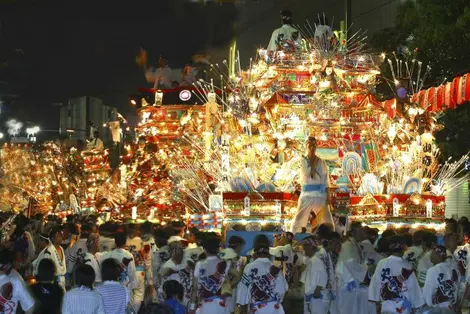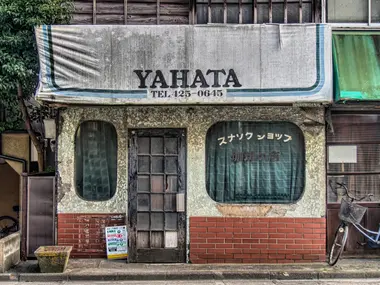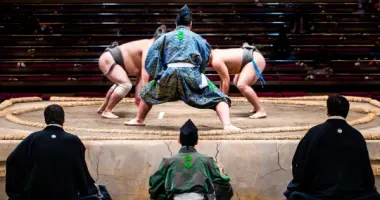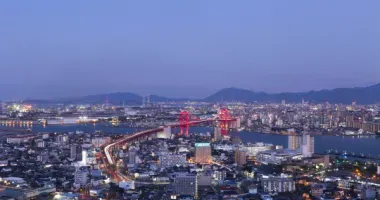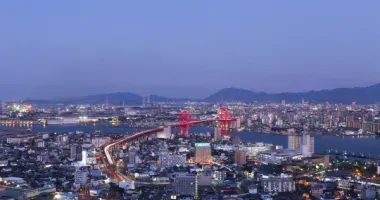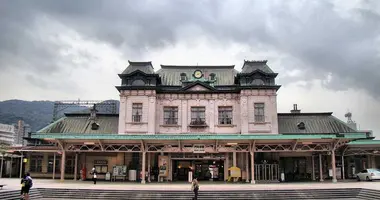yahata 八幡市
A city within the city
Yahata was first a city in its own right, before forming in 1963, two small districts of the brand new city of Kitakyushu, on the island in the south-west of Japan.
Yahata had the largest steel mills in the country and this is the reason why this city was bombed several times by the Americans during the Second World War. Note that it was again bombed on May 8, 1945 : almost a quarter of the city was destroyed. The smoke from the bombings was a chance for the region: the Americans planned to drop the second atomic bomb, Fat Man, on the nearby town of Kokura , but due to particularly poor visibility, the initial target was abandoned to the detriment of the city of Nagasaki .
Yahatanishi district
Here you can admire the Nagasaki Kaido, a 228 kilometer trade route that leads from Kokura to Nagasaki. This road dates back to the Edo period and was used by merchants to take their goods to Nagasaki, Japan's international port. The Nagasaki Kaido was quickly nicknamed “the sugar route”, the main exported commodity . For the sum of 200 yen (1€50), you can also visit the museum dedicated to this trade route.
In April, when the wisteria bloom, the Kissho-ji temple festival is held. Here you can admire, in addition to 1,000 square meters of 10 different varieties of wisteria, a 160-year-old tree in full bloom. If you're around in the second half of July, don't miss the 400-year-old Kurosaki Gion Festival, which spans four days. On the program: parades and tank battles decorated with care, traditional music and guaranteed atmosphere! Go for a walk around the shopping arcades: you will find more than 400 traditional shops, restaurants and other izakayas there.
The Yahatahigashi district
This district bears witness to the industrial Japan of the 20th century : you can visit the Yahata Steel Work there, a steelworks which opened its doors in 1901. It has now become a Cultural Property: it is open to the public free of charge, as is the park which surrounds it. Complete your visit with a visit to the Kitakyushu Innovation Gallery , which presents a history of all Japanese technological innovations. Finally, go for a walk on the side of Yahatahigashi Reservoir , which is particularly photogenic in the fall. Also take a trip to the neighborhood's natural history museum, 500 yen (3€80) entry, where you'll be greeted by dinosaur robots , just that! The museum also presents dinosaur skeletons and dedicates a room to the Yayoi era.
You will find in Yahatahigashi the free Environment Museum which highlights all the efforts put in place by the city of Kitakyushu to preserve the environment. The city has become a world example and reveals all its secrets to you. You can also take a bucolic break at Kawachi Wisteria Garden : 22 species of wisteria spread over two tunnels 80 and 110 meters long. In the fall, the 2,000 maple trees in the garden are a must! Don't miss Mount Sarakura and its view , which competes with that of Mount Inasa : climb the 622 meters high on foot or by cable car (1,200 yen per ticket, or 9€20) and enjoy one of the three most beautiful views of Japan. After the effort the comfort: it's time to relax in the natural onsen of the district, at the Kawachi Natural Hot Spring (840 yen the entrance, or 6€50) .
The two districts formed by the former city of Yahata are rich in visits! But Kitakyushu has many other surprises in store for you, so don't hesitate to stay there for several days.
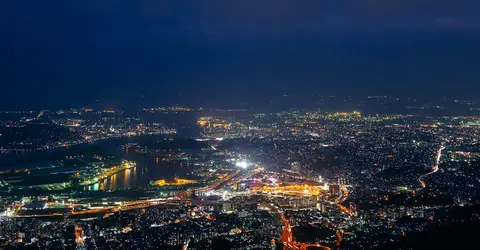
View of Kitakyushu from Mount Sarakura
Kagami
Address, timetable & access
Address
Timetable
Yahata Station (JR lines)


